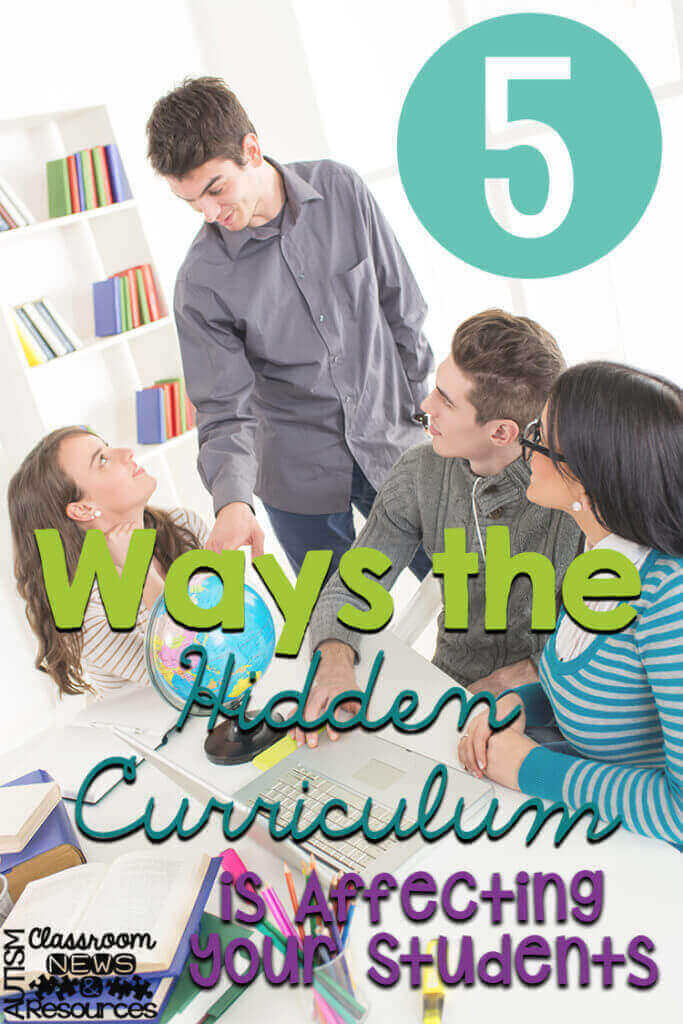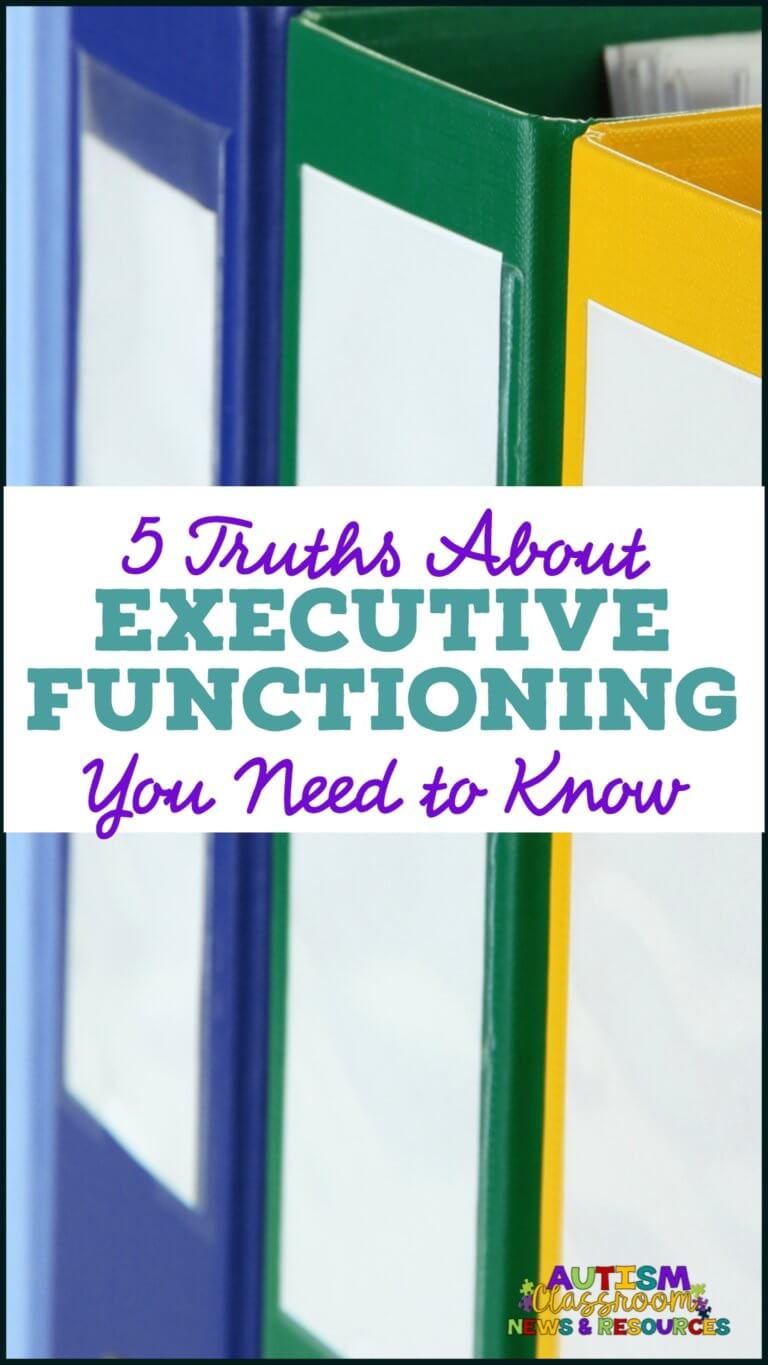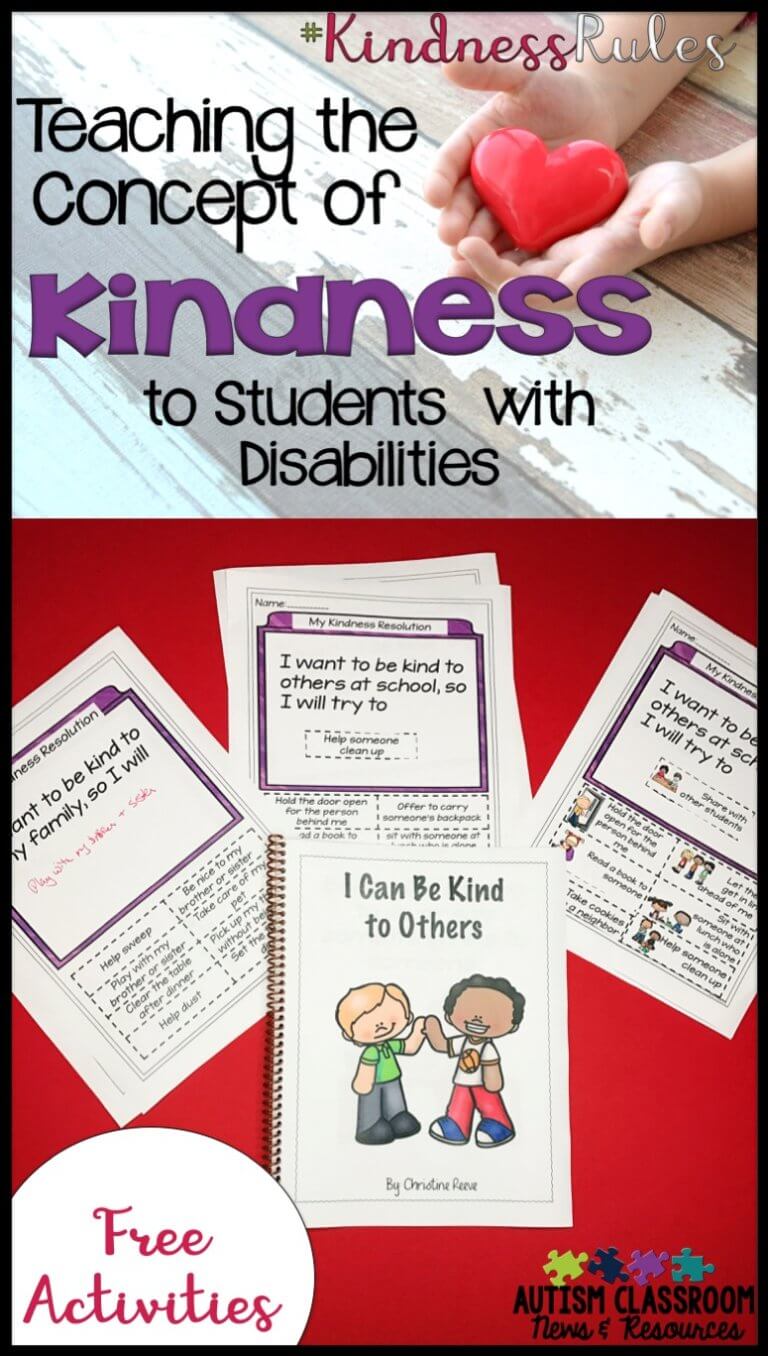So in my last post I talked about what the hidden curriculum is. Today I want to talk about how it impacts our students. As a quick refresher, the hidden curriculum is made up of the unwritten rules that people pick up through reading nonverbal social cues of those around them. Things like, “It might be OK to curse around your friends. But make sure that there are no adults within earshot.” No one taught that, but we kind of picked it up along the way.
Essentially there are 4 areas that it effects. It begins with the classroom and extends into keeping a job in the future. Today we are going to talk about how the hidden curriculum affects students in their current classrooms.
The Hidden Curriculum in Your Current Classroom
The most immediate place that the hidden curriculum affects students is in your classroom. There are so many ways that students need to pick up on unspoken messages within the classroom. It affects how they just to get along in the classroom. It can be how they let teachers know they are attending and ready to learn. Or how they might stay out of trouble and fit in with other students. Here are 5 examples.
1. Interpreting Teachers’ Directions
How many times have you told a student to stop talking and then had another student start talking? If that second student heard you, chances are he missed the underlying message. That underlying message is the hidden curriculum. Your statement meant no one should be talking (not just the one you talked to). One area students struggle with when they don’t know the hidden curriculum is when directions aren’t explicit to them. They don’t know the hidden, underlying message.
In addition, your tone of voice and facial expressions convey information about your feelings and instructions. Students who can’t interpret them well may not understand your meaning.
Directions with a Look
You know that look you give a kid when he is pushing the limits? The one that says, “Drop the subject”? You know that student who doesn’t get it? That’s because he doesn’t know that is what the look means.
We use lots of nonverbal cues to convey our intention in the classroom. Sometimes those intentions are helping students avoid getting in trouble. But if they don’t know how to interpret those messages, they can’t avoid it.
2. Knowing Teacher / Adult-Pleasing Behaviors
I know that this seems a little like teaching kids to kiss up. But think about the fact that knowing how to “get on someone’s good side” is a strategy we all use almost every day. And that’s even without being smarmy about it.
I also know that we all like to think we are above favoring any of our students for any reason. And we work to be as fair as we possibly can. However, there are times that your heart melts or your smile lights up just a bit when a student behaves in a certain way.
Knowing behaviors that make others like you, as opposed to showing behaviors that annoy you, is a useful skill. Examples include waiting quietly, not asking a question when the teacher is disciplining another student, and not interrupting. It’s not a conscious decision that a teacher, or any adult, typically makes. But we all have a soft spot for some students (or adults). And that is often related to their understanding of the unwritten rules of how to get people to like you.
3. Fitting in With Other Students
Did your mother say to you, “If everyone was jumping off a bridge, would you do it too?” Mine did…all the time! But no matter how many times she said it…it didn’t change my need to fit in. Kids want to fit in. For most of us that means noticing what others were wearing and saying, and imitating it to some degree. Even for those who rebelled against it, they had to recognize what they were rebelling against.
The hidden curriculum tells individuals what clothes, behaviors, etc. will help them fit in. Being comfortable in your environment greatly reduces anxiety in situation, allowing a student to focus more clearly on the task at hand. So “fitting in” has advantages beyond just socialization. It can have an impact on attention and motivation at school.
4. Working Effectively in Groups
The classroom is a very social place. I don’t know if we always realize just how much socialization is integrated into our curriculum. This became increasingly clear to me when a district I work with adopted a new math curriculum in elementary schools. The new curriculum required a significant amount of group work. Suddenly my kids, who were on grade level in math in the past, were wiping out! Because they didn’t know the hidden curriculum of how to work effectively with groups.
This is true at all ages. Understanding what role to play with a group means interacting with the rest of the group and determining what role everyone should play.
Working in Groups is Hard
Think about how complicated this is the next time you are in a grade level planning meeting. Ever have a teacher who monopolizes the conversation and wants everything to be her way. Or another teacher doesn’t say anything and just does her own thing without helping.
Now think about the teacher that everyone listens to. Ok, you might have to have a larger audience like a faculty meeting. It probably isn’t a teacher who leads every group or talks all the time, but when she talks, people listen.
Even as adults, working in groups is hard. Just taking the social aspects of being in groups in class, think about the academic implications. As kids, we are asking our students to navigate this social world in order to learn the academic skills through their interactions in the groups.
Examples of Hidden Curriculum in Cooperative Learning
- The other kids tune out when I talk, I must be talking too much;
- I was the leader last time, I might need to sit back and let someone else lead this time;
- Even though I know that his idea might not work,
- I have probably said that too many times already.
They spend all their time navigating that social maze or dominating the group or alienating their group.
5. Avoiding Bullies
Finally, while this isn’t academic in nature, understanding the hidden curriculum means knowing how to avoid bullies. Now, don’t get me wrong, I am NOT saying that it is the responsibility of the victim to avoid the bully. Clearly the bully is in the wrong.
However, the ability to know who makes a good friend or who is helping you and who is taking advantage of you is a difficult skill at times. Or knowing when you should do what your friends suggest and when you should refuse because they are taking advantage can be complex. They are also things that can’t be taught in rote rules because they vary based on the situation. In short they require judgement. Without knowing the hidden curriculum, students put themselves in even more jeopardy to be taken advantage of. And that is not only harmful to them but also harmful to their performance and behavior in your classroom.
So, those are 5 ways that the hidden curriculum can have an impact on students within you classroom. Have you experienced other ways it impacts the students in your classroom?
Learn about how you can teach students to recognize the hidden curriculum in this post.







